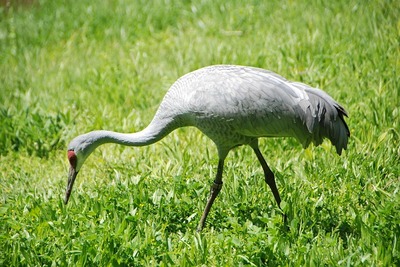Wisconsin Lawmakers Discuss Bill Allowing the Hunting of Sandhill Cranes
Thursday, March 27th, 2025 -- 9:00 AM

(Danielle Kaeding, Wisconsin Public Radio) Wisconsin lawmakers will weigh whether to allow hunting of sandhill cranes and provide aid to corn growers experiencing damage from the birds under a bill introduced this month.
The proposal marks the third such attempt in Wisconsin since 2012 to hunt the birds sometimes dubbed the “ribeye of the sky” by hunters. The Joint Legislative Council introduced the bill after a committee studied ways to manage sandhill cranes and related crop damage last year.
Under the bill, the Wisconsin Department of Natural Resources would hold a sandhill crane hunt with increased fees pending federal approval of a hunt.
The measure would also create a new program to reimburse corn growers for up to 50 percent of the cost of seed treatment used to repel birds that feed on corn seeds, capping payments at $6,250 for each eligible farm.
Rep. Paul Tittl, R-Manitowoc, introduced a bill to hunt cranes in 2021 that failed to advance. Tittl, who chaired the study committee, said he thinks it’s the DNR’s responsibility to manage the population of wild game in Wisconsin.
“They’re a beautiful bird, and some people have told me they don’t want to hunt them because it is a beautiful bird,” Tittl said, adding he thinks ducks and deer are just as beautiful or majestic. “But we don’t … hunt or not hunt something based upon the beauty of it,” he said.
Nearly hunted to extinction in the late 1800s, the eastern population of sandhill cranes, which includes Wisconsin, rebounded to more than 110,000 birds in 2023.
Hunting migratory birds is generally restricted under federal law, but the U.S. Fish and Wildlife Service can issue regulations to authorize a hunt. But the process would likely take years.
Under state law, Tittl noted farmers are currently unable to receive payments for crop damage through the state’s wildlife damage abatement program unless the DNR authorizes a hunt.
In 2023, the birds caused crop losses mostly for Wisconsin corn and potato growers that totaled almost $2 million. Bruce Ross, executive director of the Wisconsin Waterfowl Association, argued those costs will continue to rise.
“The crane population is growing,” Ross said. “Even as they bring joy to bird watchers and bird viewers throughout the state, they’re doing damage that farmers are paying the bill for. So it’s not going to go away.”
A 2010 management plan developed by the Mississippi and Atlantic Flyway Councils calls for a potential crane hunt once their numbers exceed a range between 30,000 to 60,000 birds.
Fall surveys from 2018-2022 show Wisconsin has around 51,000 sandhill cranes. Conservation groups that served on the study committee, including the International Crane Foundation and Wisconsin’s Green Fire, urged updating that management plan prior to promoting a bill to allow a hunt.
“We set these thresholds based on information we have at the time, and science and data is always changing as we start bringing in new information. That’s just the nature of things. So is the 30,000 to 60,000 the right range? I don’t know if we think that is true right now,” said Meleesa Johnson, executive director of Wisconsin’s Green Fire.
Johnson likened the situation to debate over the state’s wolf management plan, which received its first major update in 2023 in more than two decades.
Feel free to contact us with questions and/or comments.




